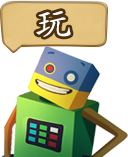
It used to be a given that using a computer meant learning a new language. Recent innovations have made the Internet increasingly user-friendly. Today’s tools allow anyone to publish content without writing a single line of code. Prototyping kits make it possible for amateurs and hobbyists to develop their projects in the Internet of Things by just adding drag and drop blocks and the desired functionalities to finalize coding their projects.
Even the most user-friendly development boards need to be programmed, and even the simplest programming languages still seem difficult to beginners. That’s why some developers have begun to provide visual programming tools that abstract away the functions, variables, and syntax rules of the underlying code to give users a simple drag-and-drop interface. This can be used to build apps out of discrete pieces of logic that can apply tailored settings to any type of hardware.
Node-RED is a visual tool used in Internet of Things projects. Programs in Node-RED are called Flows, and are built up from blocks of code called Nodes. Users drag and drop Nodes onto a workspace. They can make their own Nodes as they become more experienced using JavaScript. After writing the code, they can wire the Nodes together to define the logical relationships of the Flow. An online database collects Nodes created by all users to be shared among the developers.
Netlab is another drag and drop tool for the Internet of Things. It uses prebuilt pieces of code to create boxes full of input fields, sliders, toggles, and other on-screen controls. Users choose widgets suited to the task at hand, set the parameters for each one, and connect them together in a logical sequence to create a program. The coded programs are compatible with the original Arduino and similar Linux-based embedded computing hardware. Originally created as a teaching tool to ease the process of teaching programming, Netlab is being used in development by hobbyists and tinkerers today.
ArduBlock is a Block Programming Language developed to be compatible with Arduino boards. The Ardublock software is a plugin which is added to the Arduino’s IDE to let the user program using blocks to represent functions.
Scratch for Android is a Scratch modification that enables simple programming of the Arduino open source hardware platform. It provides new blocks to manage sensors and actuators that are connected to the Arduino.
It is time for you to start developing your own projects. You don’t have to spend a lot of time studying to start programming, so think up your first project and get started now.
